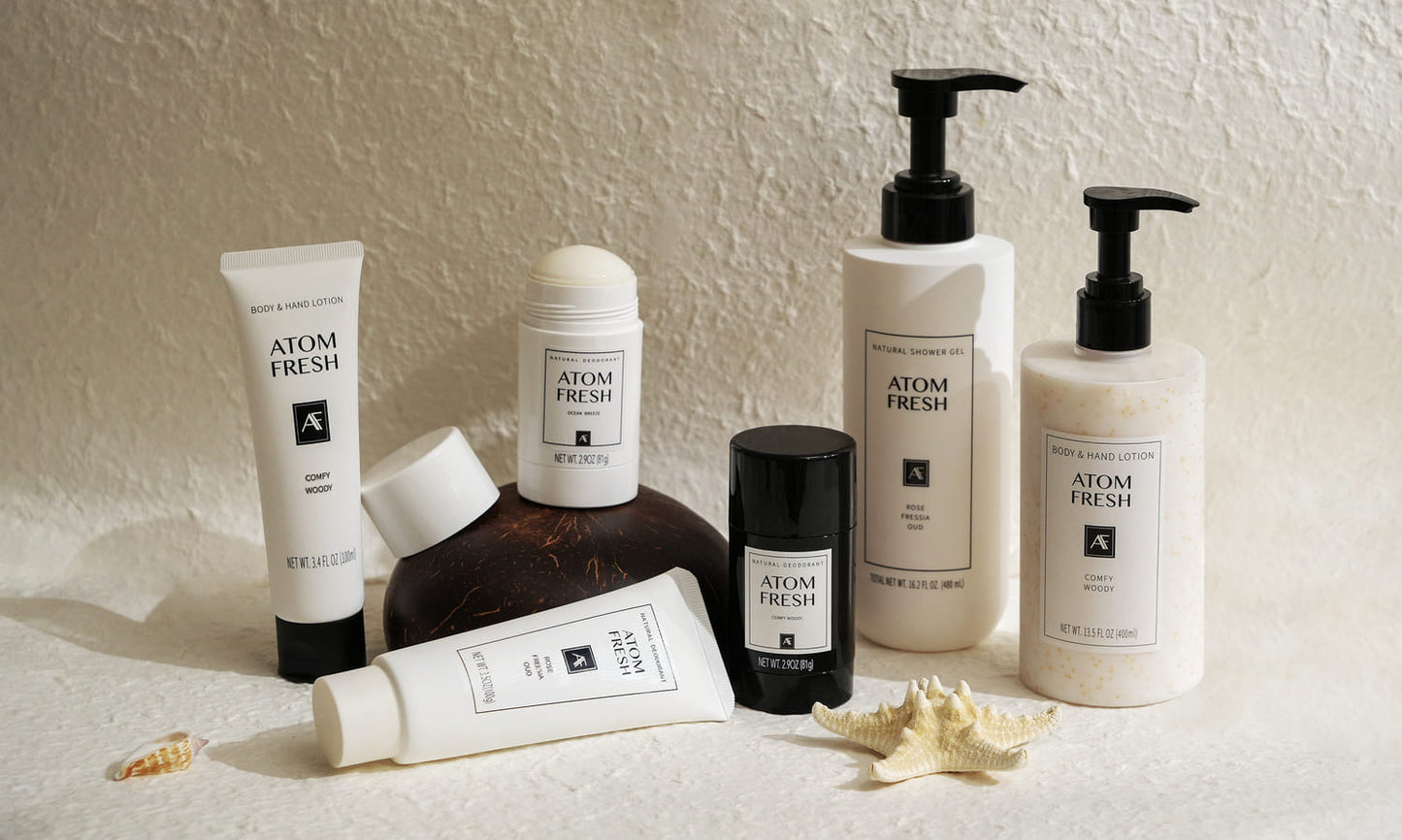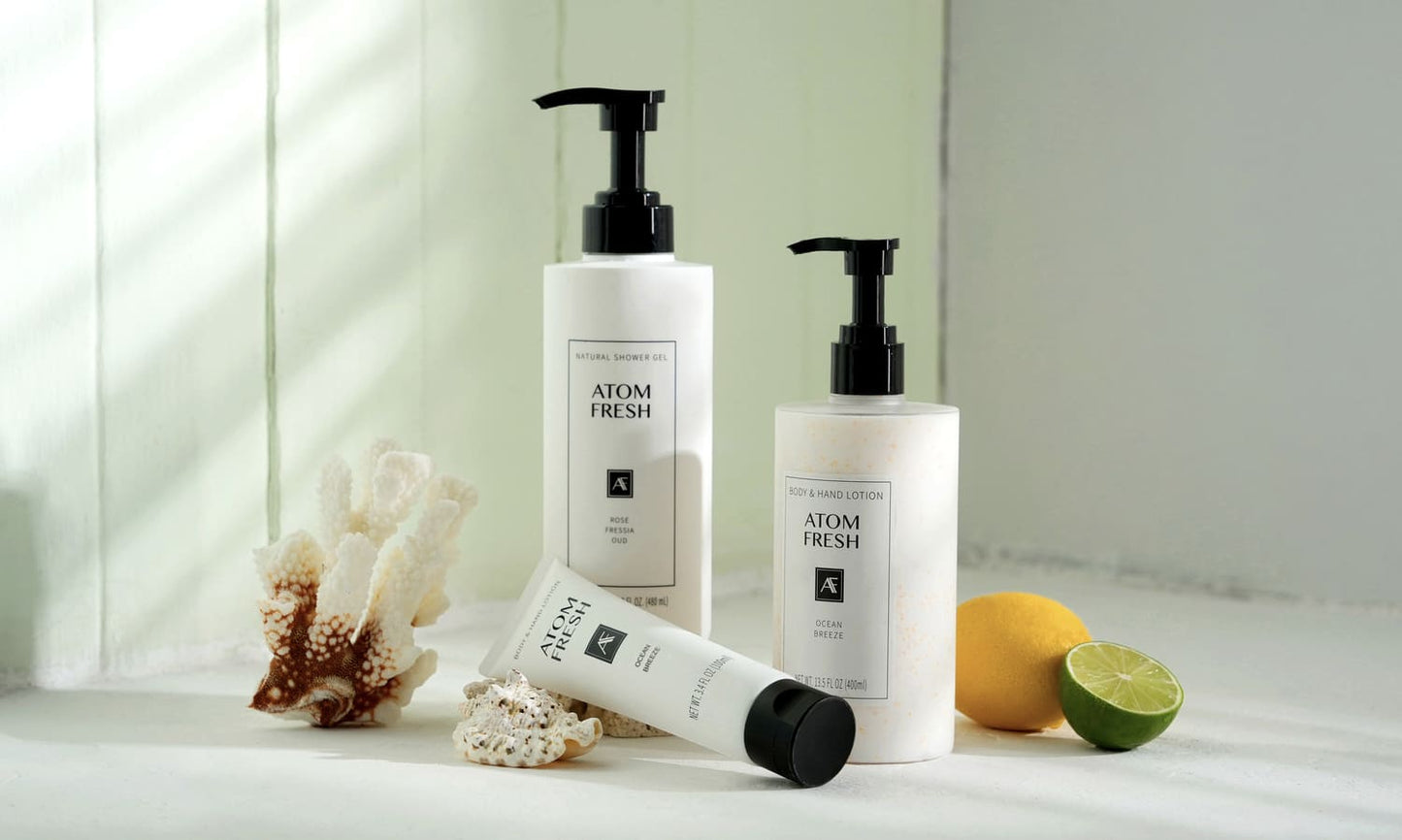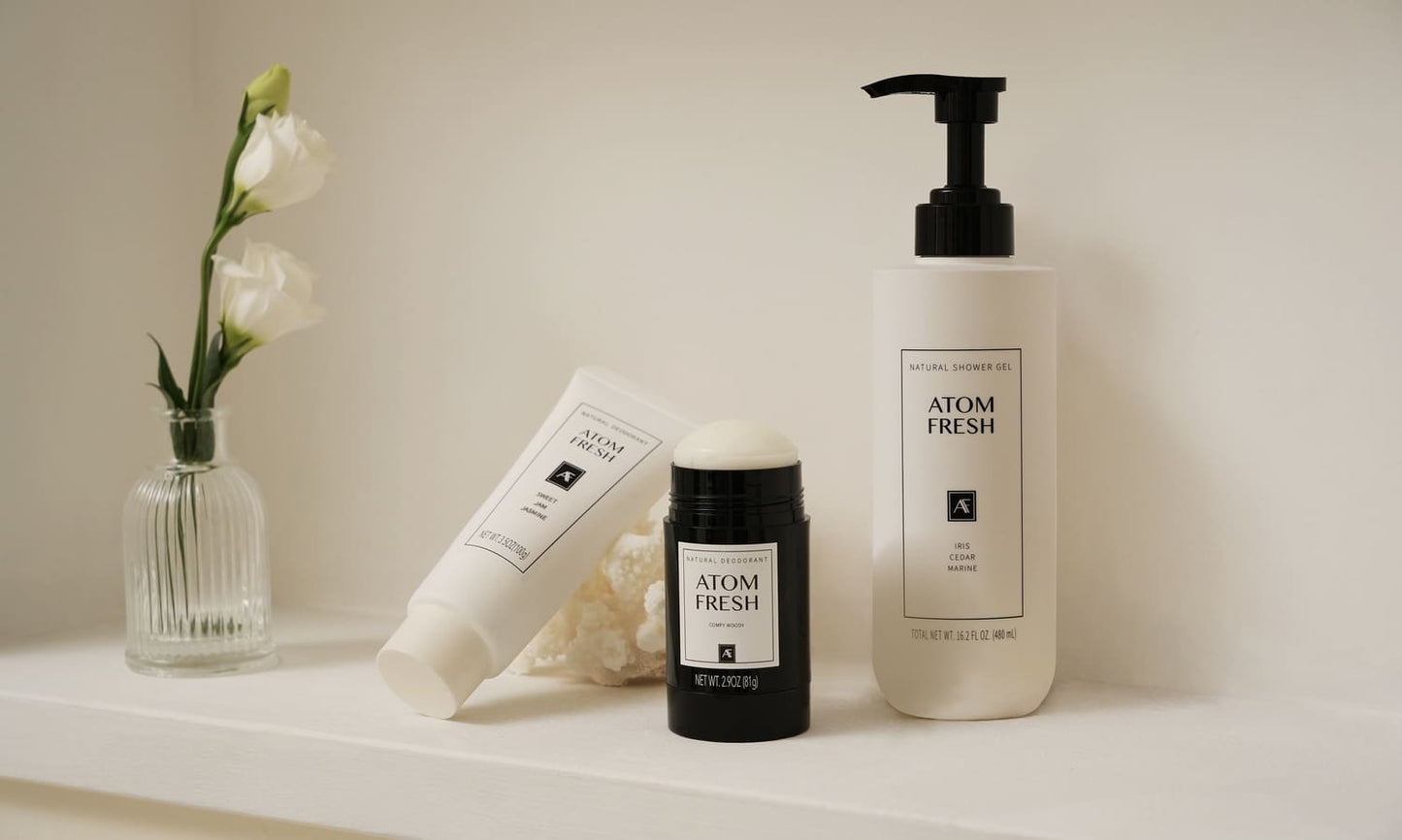Challenging the Old Mindset: Why Expired Deodorant Is Not Just “Still Fine”
Let’s be honest—many of us have found an old stick of deodorant at the back of a bathroom drawer and thought, "It still smells okay, so it must be fine."
But here’s the thing: deodorant does go bad, and using it past its prime can affect not only how well it works but also your skin’s health.
Today’s self-care market has evolved—just like we’ve started caring about food freshness and skincare expiration dates, deodorant deserves the same attention.
Brands like AtomFresh are reshaping the conversation by combining freshness, skin safety, and scent variety into one package.

What “Going Bad” Means for Deodorant
Shelf Life Explained
Most deodorants have a shelf life of 1–3 years from the date of manufacture. This varies depending on whether it’s an antiperspirant, a natural deodorant, or a hybrid formula.
Signs Your Deodorant Has Expired
- The scent has faded or smells “off.”
- The texture has hardened, crumbled, or separated.
- The color has changed.
- It causes unexpected skin irritation.
The Difference Between “Best By” and “Expiration Date”
- Best By: Indicates when the product is at peak performance.
- Expiration Date: The last date the manufacturer guarantees safety and efficacy.
The Science Behind Deodorant Expiration
Ingredient Stability and Breakdown
Active ingredients—like aluminum salts in antiperspirants or natural antibacterial agents in plant-based formulas—can lose potency over time.
How Preservatives Work
Preservatives prevent bacterial growth. Natural deodorants, often with minimal preservatives, may expire faster.
FDA Regulations and Labeling Standards
In the United States, the Food and Drug Administration (FDA) classifies products based on how they work and what claims they make under the Federal Food, Drug, and Cosmetic Act (FD&C Act).
- Deodorants: These products are designed to mask or neutralize body odor. They don’t alter the body’s natural functions, so the FDA treats them as cosmetics. Cosmetic labeling must comply with 21 CFR Part 701, which covers ingredient disclosure, net quantity, manufacturer/distributor information, and any necessary safety warnings. For most cosmetics, an expiration date is not required unless the product’s stability is limited and could impact safety or performance.
- Antiperspirants: These go a step further by reducing underarm sweat through a physiological effect—usually by blocking sweat glands with aluminum-based active ingredients. Because they change how the body functions, the FDA regulates them as over-the-counter (OTC) drugs. Antiperspirants must follow 21 CFR Part 201 and the relevant OTC monograph (21 CFR Part 350, Subpart C), which mandate listing active ingredients, directions for use, warnings, and a standardized Drug Facts panel. OTC drugs must also carry an expiration date, supported by stability testing to confirm the product maintains its claimed strength and effectiveness until that date.
Why it matters for labeling and marketing
This difference in classification shapes everything from packaging to claims you can make:
- Deodorants (cosmetics) have more flexibility in design and branding, but cannot make drug-like claims unless they meet OTC requirements.
- Antiperspirants (OTC drugs) have stricter labeling rules and must follow the Drug Facts format, with a scientifically backed expiration date.
FDA Classification & Labeling: Deodorants vs. Antiperspirants
| Feature / Requirement | Deodorants (Cosmetics) | Antiperspirants (OTC Drugs) |
|---|---|---|
| Regulatory Status | Cosmetic (21 CFR Part 701) | OTC Drug (21 CFR Part 201 & 350) |
| Function | Masks or neutralizes odor; no physiological effect | Reduces sweat by blocking sweat glands; physiological effect |
| Active Ingredients Listed? | Not required (only full ingredient list) | Required in “Drug Facts” panel |
| Drug Facts Panel | Not used | Mandatory standardized format |
| Expiration Date | Not required unless product stability is limited | Required; must be supported by stability testing |
| Claims Allowed | “Odor protection,” “fresh scent,” “long-lasting fragrance” | “Reduces underarm wetness,” “24-hour wetness protection” |
| Marketing Flexibility | High — can focus on fragrance, lifestyle, or brand story | Limited — must meet OTC claims language and formatting rules |
| Enforcement Agency | FDA (Cosmetics Division) | FDA (Drug Division) |
| Testing Requirements | Safety testing only; no efficacy proof required by FDA | Safety + efficacy supported by scientific data per OTC standards |
Natural vs. Conventional Deodorants: Does Shelf Life Differ?
Why Natural Deodorants May Expire Sooner
Without synthetic stabilizers, essential oils and botanical extracts can oxidize in 6–12 months.
Role of Botanical Oils and Plant-Based Ingredients
Plant oils add skin benefits but are more sensitive to heat and light exposure.
AtomFresh’s Formulation Stability
The Mini Deodorant Starter Set uses carefully selected plant-based ingredients that balance natural freshness with stability—making them a reliable travel and daily use option.
How to Tell if Your Deodorant Is Bad
Changes in Texture
If it feels gritty or crumbly, it’s past its best.
Changes in Smell
A sour or stale odor means the essential oils have degraded.
Skin Irritation Risks
Expired products may cause redness, itching, or even mild rashes due to ingredient breakdown.
Health Risks of Using Expired Deodorant
Bacterial Growth and Contamination
Old deodorant can harbor bacteria, especially stick and cream formulas exposed to skin.
Reduced Odor Protection
You may find yourself reapplying more often—or worse, smelling less than fresh.
Increased Skin Sensitivity
Expired formulas may disrupt skin’s natural barrier, increasing sensitivity.
How to Store Deodorant for Maximum Freshness
Best Storage Conditions
- Cool, dry places
- Away from direct sunlight
- Airtight when possible
What to Avoid
Avoid leaving deodorant in hot cars or damp bathrooms for extended periods.
Travel Tips
Mini sizes like AtomFresh’s 1.1oz sticks are perfect for TSA approval and staying fresh on the go.
Case Study: The Rise of Mini Deodorant Starter Sets
Why Portability Matters
Smaller sizes mean less waste if you don’t finish before the expiration date.
Spotlight on AtomFresh Mini Deodorant Starter Set
This set includes:
- Rose Freesia Oud
- Ocean Breeze (Iris Cedar Marine)
- Comfy Woody
- Sweet Jam Jasmine
Each is TSA-friendly, perfect for gym bags, and lets you explore multiple scents without committing to one large deodorant stick.
Sampling Multiple Scents Without Waste
Trying different scents before buying full-size means less product left unused and expired.
When to Toss vs. When to Keep
General Rules
- Toss if past expiration date.
- Toss if smell, texture, or color changes.
- Keep only if within date and stored properly.
Natural Products
Check sooner—typically within 12 months.
Seasonal Changes
Heat waves and cold winters can affect stability.
Sustainability and Expired Products
Can Expired Deodorant Be Recycled?
Check your local recycling rules—some packaging is recyclable, but product residue needs to be removed.
Eco-Friendly Disposal Tips
Scrape out and compost plant-based formulas, recycle the container if possible.
Consumer Trends in the U.S.
Data on Natural Deodorant Popularity
A 2023 Statista report showed a 65% increase in U.S. consumers purchasing natural deodorants compared to 2018.
Focus on Safety and Self-Care
Consumers now prioritize ingredient transparency and expiration awareness.
How Brands Are Responding
More companies are offering mini, trial, or seasonal packs—just like AtomFresh.
Conclusion: Listen to Your Skin
Deodorant is more than just a daily essential—it’s part of your health and self-care routine.
Paying attention to expiration dates ensures effectiveness and skin safety. With options like the AtomFresh Mini Deodorant Starter Set, you can stay fresh, explore new scents, and reduce waste all at once.
FAQ
1. How long does natural deodorant last?
Usually 6–12 months, depending on ingredients and storage.
2. Can you use deodorant after its expiration date?
Not recommended—effectiveness drops and irritation risk increases.
3. Does temperature affect shelf life?
Yes, heat accelerates ingredient breakdown.
4. Is expired deodorant dangerous?
It’s rarely dangerous but can cause skin irritation and won’t protect effectively.
5. How to make deodorant last longer?
Store in cool, dry places, avoid direct sun, and choose smaller sizes if you use it infrequently.
References and Further Reading
- U.S. Food & Drug Administration (FDA) – Cosmetics Labeling Guide
- Statista – U.S. Natural Deodorant Market Data 2023
- American Academy of Dermatology – Skin Care and Product Safety
#AtomFresh web #Atomfresh Mini Deodorant Starter Set #AtomFresh Natural Body Lotion





